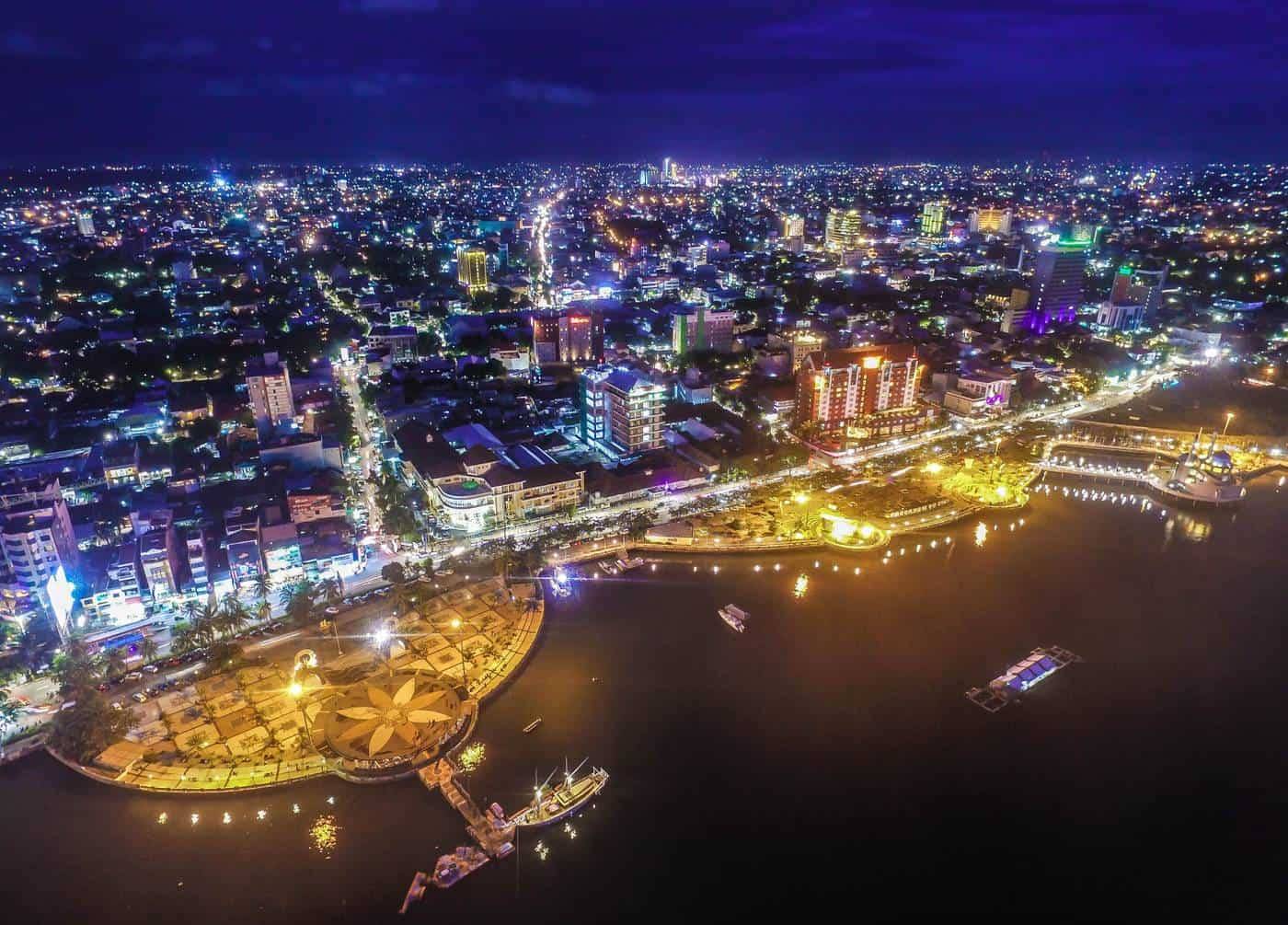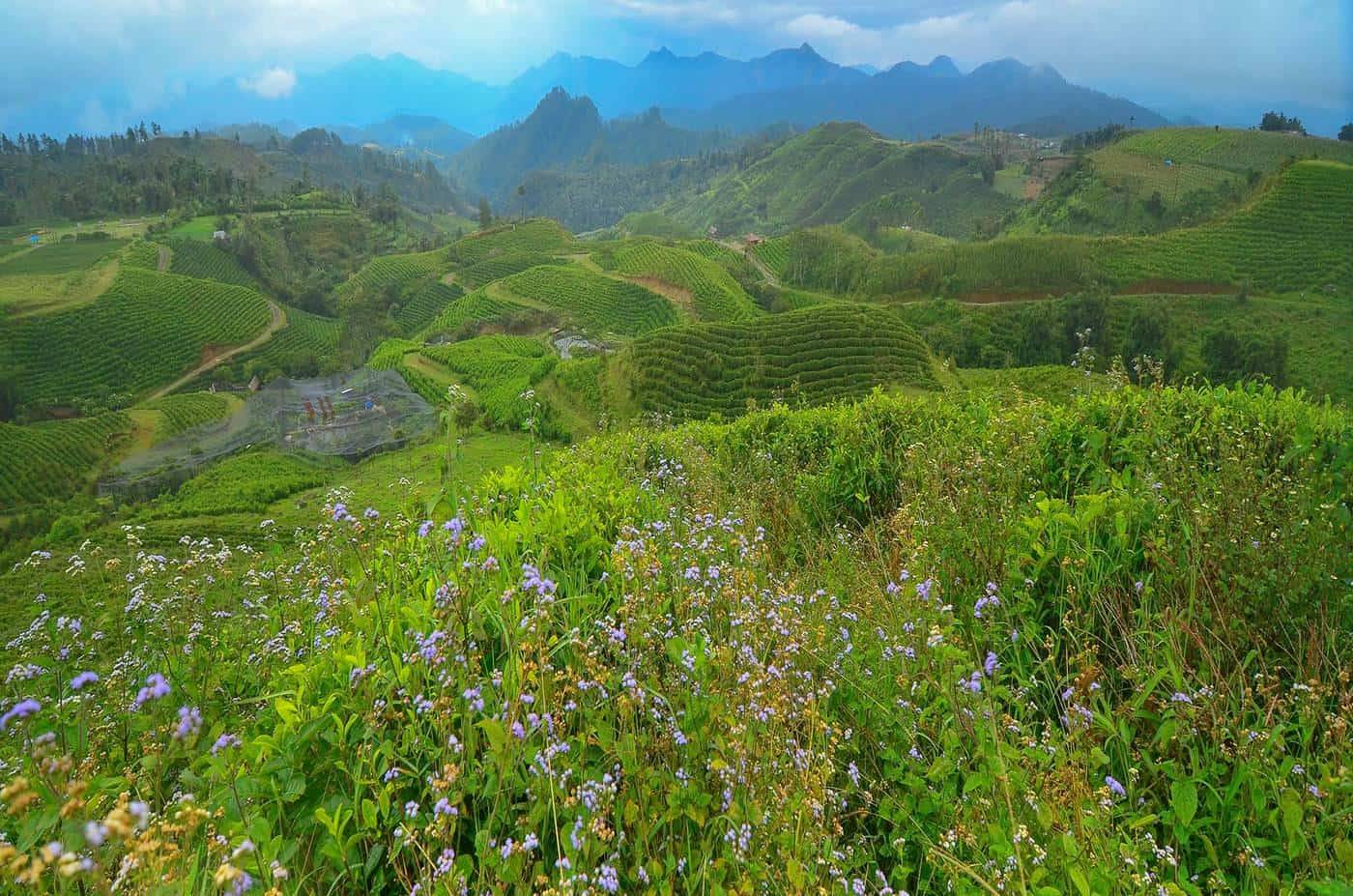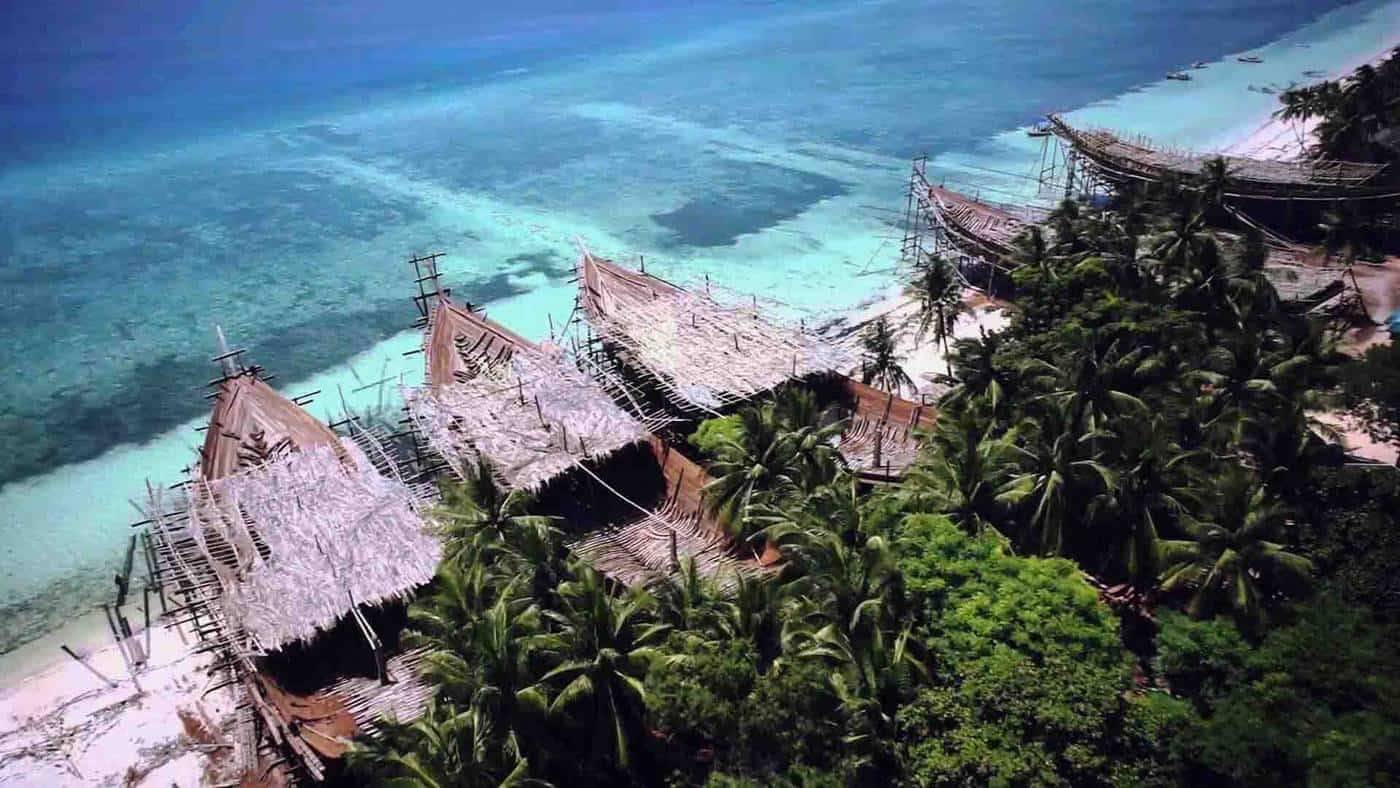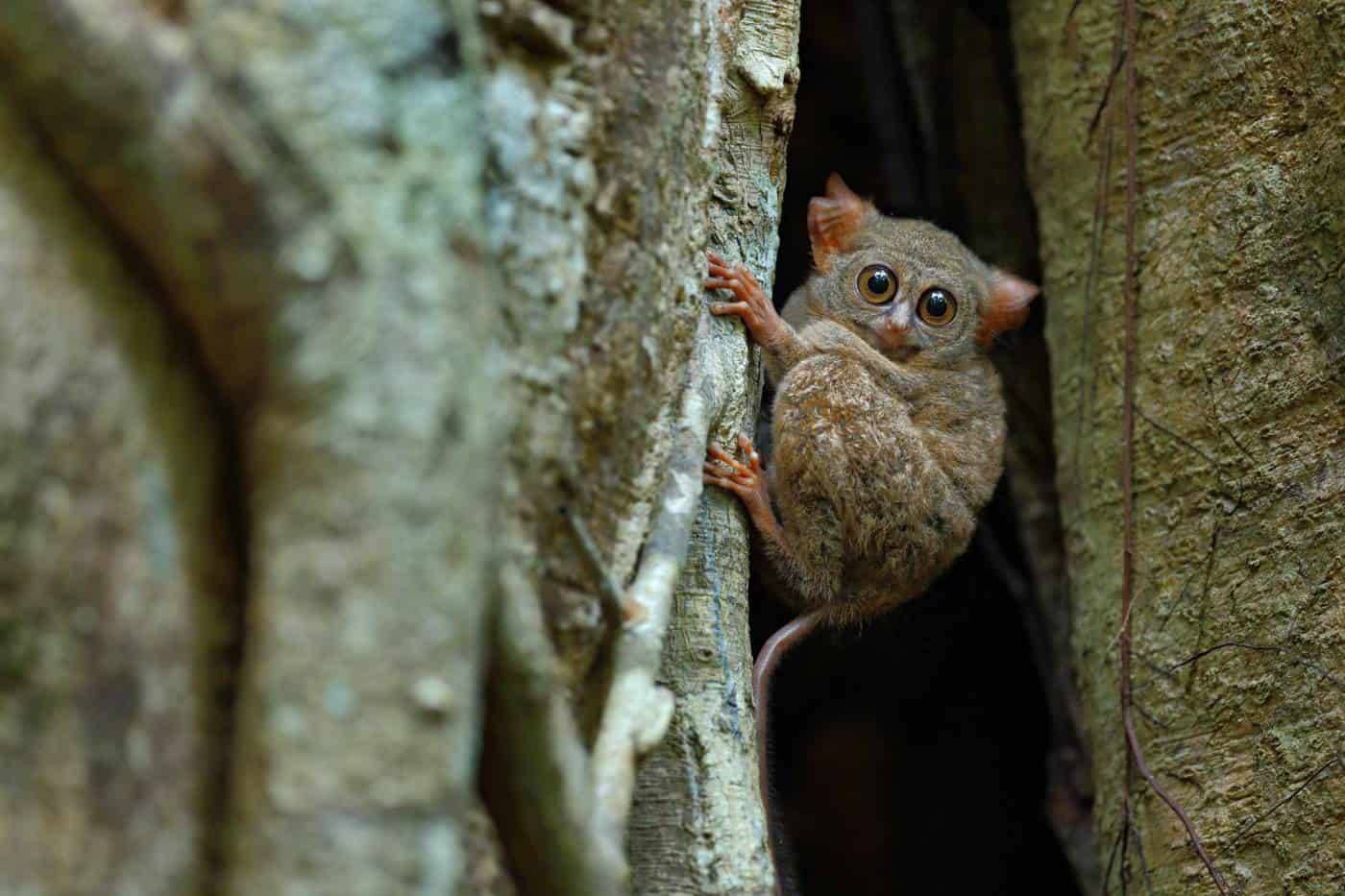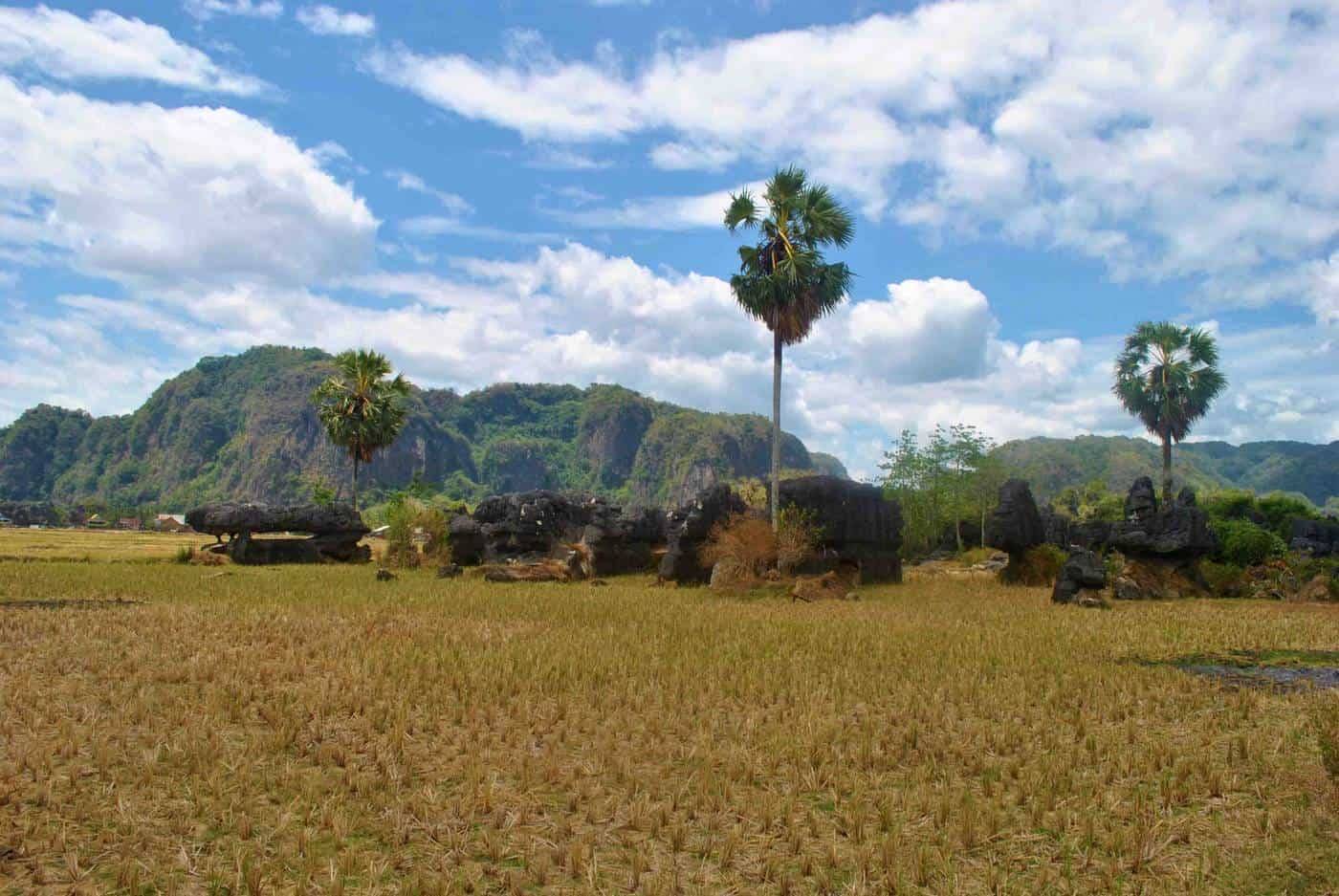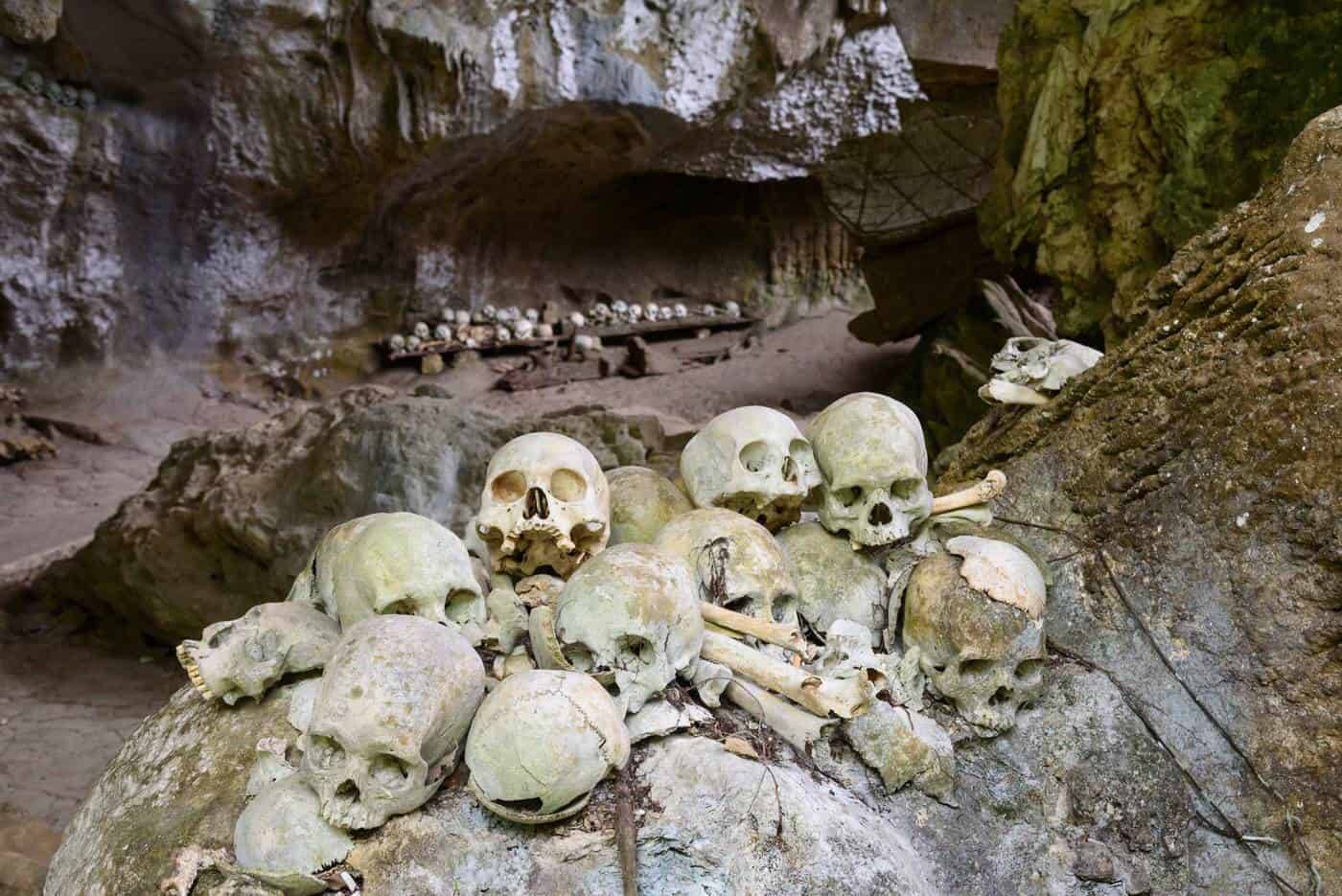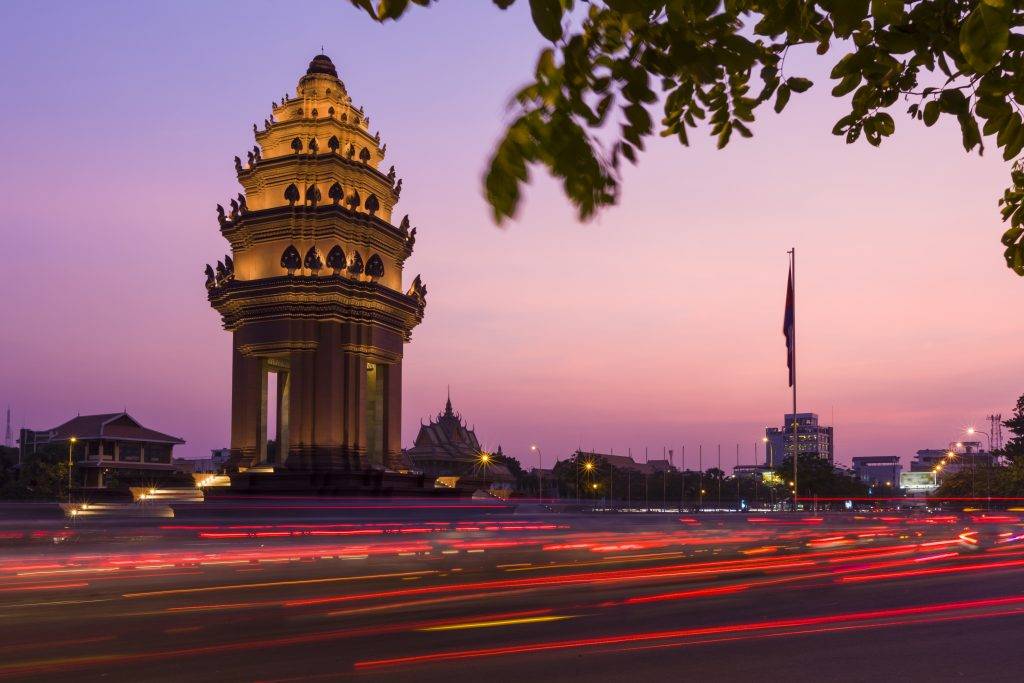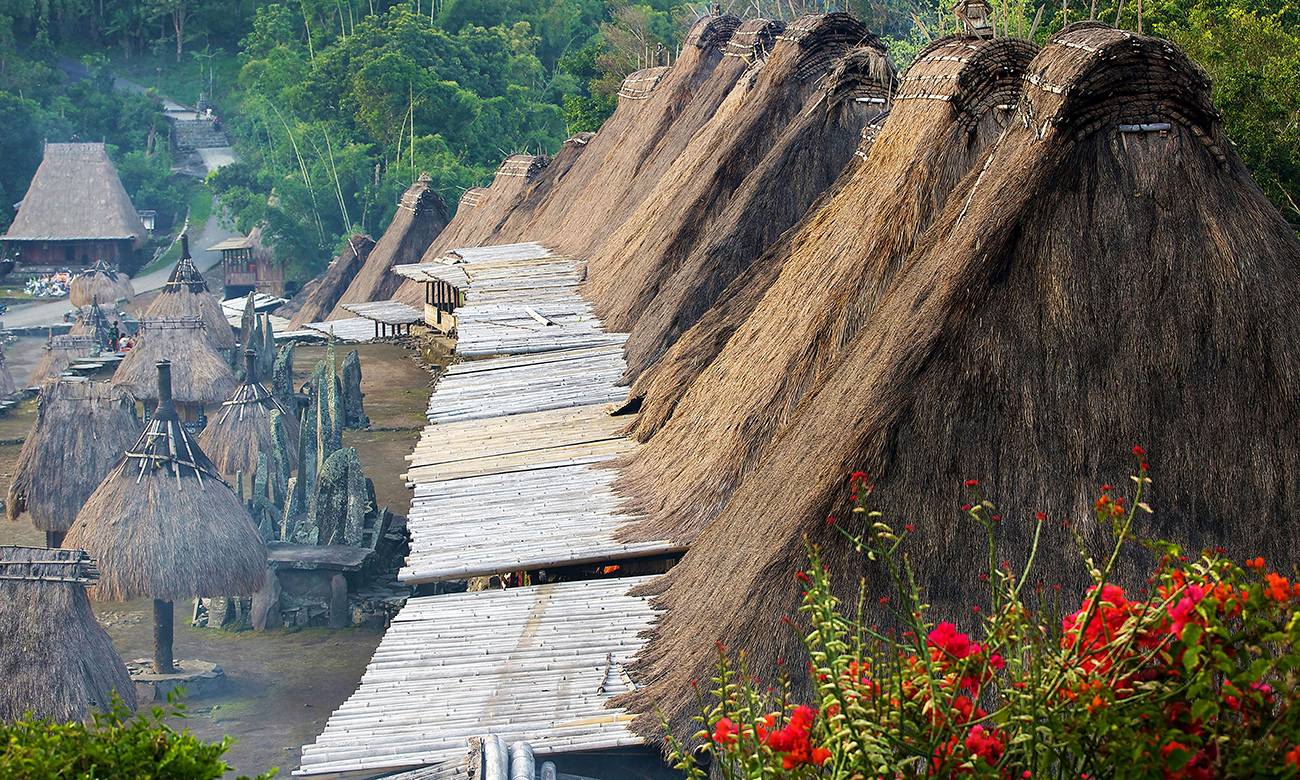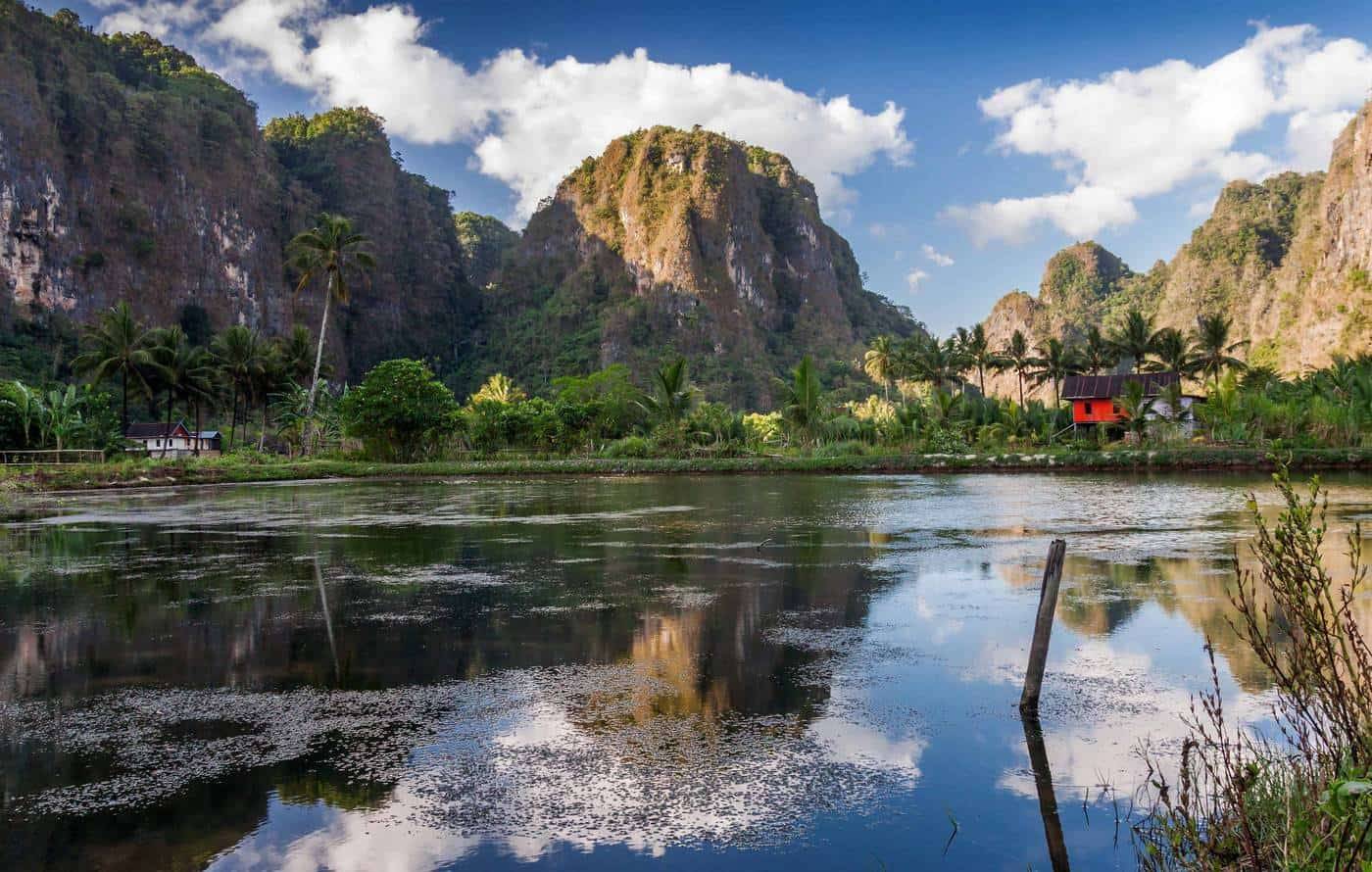
SOUTH SULAWESI – FROM WHITE STRETCHES TO EERIE CLIFF TOMBS
MAKASSAR
The provincial capital of Sulawesi is a city of contrasts, and many would say it is rather a place to ‘scratch the surface’ than linger. The 5th largest city of Indonesia, as one would expect, it is crowded, noisy and not exactly ‘polished’. From modern high-rise buildings to shocking slums, the coastal metropolis of Sulawesi is the gateway to most of its attractions.
Anyhow, Makassar is one of the culinary hotspots of Indonesia. The colourful blend of cultures made the local cuisine very interesting, although vegetarians might struggle to find a meatless meal.
ESSENTIAL EXPERIENCES IN MAKASSAR
Local Cuisine – try some of the local specialities which typically include pig intestine, liver, lungs, chicken hearts, tripe, or cow brain, fish heads and other goodies (Coto, Konro, Kering or Pallubasa are definitely nothing for vegans)
Fort Rotterdam – old fortress from Dutch colonial era, one of the few historical things to see in Makassar
Losari Beach – Losari is a lovely spot worth of an evening stroll and sunset watching with Laguna evening food markets
Khayangan & Samalona Islands – take a short boat ride to one of these beautiful isles with soft, white stretches (visit the islands unless heading to the north, there will be truly stunning ones!)
NOTE The Westerners might well be an attraction themselves for the locals. So, don’t get surprised when you find yourself surrounded by young locals with cameras asking you to take a photograph with them. This is Sulawesi – a place where tourism is still in nappies!
THE SOUTHERNMOST SULAWESI
At the bottom of the South Sulawesi, the country is defined by jaw-dropping scenery and almost untouched nature. From the rugged Malino Highlands and picturesque tea plantations to the idyllic coast of Bira and its pristine coral reefs, Sulawesi`s southern regions boast natural attractions.
The area does not often see Western visitors, and not even locals travel much hence it hardly ever gets crowded – this is a paradise for road trippers who don`t mind getting out of their comfort zone.
TRAVEL TIP
Hire a car/motorbike in Makassar and drive to Tanete, via the highlands of Malino and past the staggering mountain of Moncong Lompobatang (2874 m). Then continue to Bira – the southernmost tip of east Sulawesi. Bira is a splendid beach and diving destination, and although it takes some efforts to get here it is absolutely worth it!
BIRA COAST
The locals claim that Bira is the most beautiful beach in the entire Sulawesi. Scuba divers will certainly want to spend a few days in the nearby Selayar Islands (dugongs, manta rays, parrotfish, scorpionfish, cuttlefish and zebra batfish) and Tanah Beru is also a lovely beach town to visit for the famed Phinisi boats.
NOTE
To get to the Selayar Islands, can be a bit of an odyssey. You can catch a bus from Makassar to Bima if you don`t drive and a ferry from Bima to Pamatata, then get an ojek to arrive at the capital town Benteng where most of the dive resorts are. Visiting the islands will definitely pay off, though!
ESSENTIAL EXPERIENCES IN THE SOUTHERNMOST SULAWESI
Lembah Ramma – camping, hiking, nice nature reserve
Malino Highlands – waterfalls (Air Terjun Parangloe, Air Tanjung Lembanna, Air Tekapala) and tea plantations (Kebun Teh Malino)
Moncong Lompobatang (2874 m) – climb the mountain via Puncak (2,870 m) which is known for the tomb of the King of Gowa (1-2 day hike)
Bira Cape – enjoy the white sands and turquoise seas, snorkelling and scuba diving tours available, good tourist infrastructure
Apparalang Beach – north of Bira, spectacular scenery, rugged coast, cliffs and rock formations
Bissapu Waterfall – one of the most picturesque waterfalls in Sulawesi, ideal for photographers and nature lovers (access from the village of Bonto Saluang)
Selayar Islands – world-class dive locations: Pulau Kambing, Selayar Atoll and Selayar East
Tanah Beru – pay a visit to the small coastal village of Lemo Lemo to watch the local shipbuilders crafting the famous Phinisi boats in a traditional way
BATIMURUNG-BULUSARAUNG NATIONAL PARK
This wonderful wilderness area, located just 50 km north of Makassar, was first explored in 1857, and for its vastness, it was then divided into several wildlife sanctuaries and protected areas: Maros-Pangkep Karst, Bantimurung, Gua Pattunuang, Bantimurung, Karaenta, and Bulusaurung.
There are two main reasons to come here – spectacular karts landscape and exotic butterflies.
The region is home to almost 300 pre-historic caves, waterfalls and unique animal collection, including Sulawesi moor macaque, the red-knobbed hornbill, cuscus and palm civet and bats and the endangered Tarsius fuscus (one of the world`s smallest mammalians).
The Leang-Leang area is where the oldest dated hand stencil in the world and possibly the oldest figurative depiction in cave art were found.
ESSENTIAL EXPERIENCES IN BATIMURUNG-BULUSARAUNG NATIONAL PARK
Rammang-Rammang – this limestone area will blow your mind away with its karst formations, caves, waterfalls, forested mountains, paddy fields, lakes and rivers – this is a perfect spot for nature lovers, climbers and photographers
Green River – rafting, canoeing, kayaking
Bantimurung Waterfall – known for unique species of butterflies
Bantimurung Cave – gorgeous stalagmites and stalactites
Bantimurung Butterfly Park – a collection of native butterflies, found nowhere else on earth
Maros & Bone Caves – 33 ancient caves throughout the two of regencies, lovely waterfalls, Stone & Dream Caves are known for tubing
Petta Kere Cave – the oldest dated hand stencil in the world – a female babirusa animal, (located 12 km from Maros, the entrance to the cave is 30 m above a rice field, access by ladder)
TEMPE LAKE (SENGKANG)
Tempe Lake is just another great place for photography and eco-tourism. Sengkang, once the capital of the ancient Bugis Kingdom, is a town with great historical and cultural heritage.
Bustling markets are selling silk, local hand-made art and craft products, and the region preserves its customs and traditions. The city overlooks Danau Tempe lake and its shallow waters fringed by wetlands which are dotted with traditional floating huts and birdlife.
Blossoming eco-tourism attracts more and more Westerners, particularly the local fishermen villages that can be easily reached by boat from the main port.
ESSENTIAL EXPERIENCES AROUND SENGKANG
Singkang Local Markets – traditional silk weaving, textiles and craft
Floating Villages – have a cup of tea or coffee with locals and learn about their life on the water, fishermen villages can be visited from the Temple Port via a small rowing boat
Bird Watching – Lake Tempe is home to a large population of migratory birds (best to watch from a boat, tour available from Sengkang)
BULU RANTEMARIO VOLCANO
Gunung Latimojong (3,478 m), known as Mount Rantemario, is often dubbed as the ‘Roof of Sulawesi’ and obviously, so, it is the islands highest peak.
The summit of Rantemario can be climbed from the village of Kerangan, and it is not a very difficult hike; the route has 8 designated “Pos” staging points, and the peak can be reached within 4 hours (starting at 1400 m). The starting point is the town of Baraka, near Tana Toraja.
TANA TORAJA
Sulawesi`s major attraction and Indonesia`s icon of ecotourism magnetises hundreds of adventurers and photographers each year, for so much has been spoken and written about the local culture and its peculiar customs.
The National Geographic named Tana Toraja ‘a place where death doesn`t mean goodbye’. Indeed, the region is famous for bizarre funeral ceremonies, eerie cemeteries, ‘walking’ mummies, skull bones and skeletons – a place where superstitious beliefs continue to grow, where families live with dead bodies for weeks, and live beings are regularly sacrificed. The reason is that the indigenous people here celebrate death a little bit differently from us – Westerners.
Rantepao is the epicentre of Tana Toraja with excellent tourist infrastructure.
ESSENTIAL EXPERIENCES IN TANA TORAJA
Rantepao – the gateway to Tana Toraja and a town where to hire a local guise who will take you around the region. Every guesthouse and hotel offers a wide range of tours and guides (cultural tours, trekking tours, waterfall & jungle tours, funeral tours)
Batu Lemo – the most famous burial site, a cliff carved with small stone graves and tau-tau effigy
Kete Kesu – a well-known hanging grave site and beautiful Tongkonan houses, Rambu Solo festival, Rambu Tuka festival
Makale – Kambira baby tree graves (20 km from Rantepao)
Bori Kalimbuang – 24 large megaliths, 54 smaller megalithic stones, a UNESCO site (5 km from Rantepao, in Sesean)
Sillanan – drive through the highlands of Sillanan to encounter remote villages, megaliths, Tongkonan houses and try Torajan coffee on the way
Batutumonga – beautiful scenery, stunning views, drive through the countryside
DID YOU KNOW?
Sulawesi is home to 6 extremely rare and endangered species of animals that can be seen nowhere else on earth. For instance, Anoa (something between water buffalo, deer and goat, only 5000 anoas are still in existence), Babirusa (wild deer-pig), Maleo (a peculiar flyless bird that looks more like an exotic cockerel, 10 000 animals left), Kuskus (a marsupial resembling a small bear and it prefers a lazy lifestyle similar to koala), Celebes Black Macaque (the primate is close to extinction due to illegal hunting, sadly it is a very popular bushmeat for the local people, 4000 animals left) and Tarsius Tarsier (one of the world`s smallest primates).
TRAVEL INDEPENDENTLY (SELF-DRIVE)
The Southern Sulawesi has reasonably good roads and travellers can easily self-drive. Travelling independently will give you the opportunity to enjoy breathtaking scenery, and get an authentic experience. Besides, South Sulawesi has OK roads and good tourist infrastructure.
If you hire a car/motorbike in Makassar, you can do a loop trip around the southern province (or even the whole island circuit if you dare, but the further north you drive the worse the road conditions will be. NOTE Self-drive ONLY in the dry season as that is the only time when roads are passable. Also, travelling in Sulawesi can be time-consuming, so your itinerary should be flexible.
WHEN TO TRAVEL
The best time to visit South Sulawesi is the dry season (June-October).
HOW TO GET THERE
Fly to Makassar.
For all international flights visit www.momondo.com or www.skyscanner.com
For all domestic flights check out Lion Air, Garuda Indonesia or Sriwijaya Air

